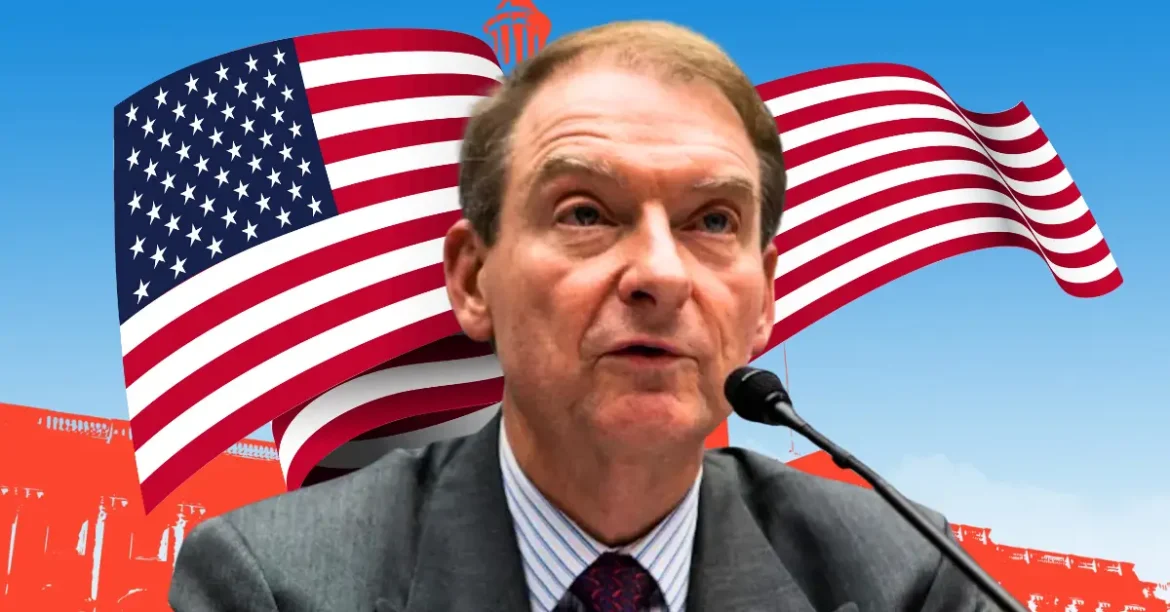Paul Atkins’s ascension to the chairmanship of the U.S. Securities and Exchange Commission (SEC) marks a pivotal moment for cryptocurrency regulation, signifying a substantial shift in regulatory philosophy and enforcement style. This comprehensive analysis explores Atkins’s background, the key challenges he faces, his policy outlook regarding digital assets, and the expected impacts on the crypto industry and market participants under his leadership.
Background and Context of Paul Atkins’s Chairmanship
Paul Atkins, confirmed by the Senate with a close 52-44 vote in April 2025, brings a pro-crypto voice to the SEC helm after previously serving as an SEC commissioner from 2002 to 2008. Nominated by former President Donald Trump, Atkins is recognized for his advocacy of clearer, innovation-friendly crypto regulations. His appointment follows a tenure of SEC leadership under Gary Gensler marked by aggressive enforcement actions and stringent regulatory approaches toward cryptocurrencies, often criticized for creating market uncertainty and stifling innovation.
Atkins enters the SEC chair role amid an environment of enhanced regulatory scrutiny but also amidst growing calls within the industry and government for more definitive rules to shape U.S. digital asset markets. His early public appearances and speeches underscore a mandate to recalibrate the SEC’s crypto strategy towards transparency, innovation encouragement, and investor protection.
Challenges and Controversies Surrounding Arctic Crypto Regulation
Atkins faces immediate and intense scrutiny, illustrated in congressional hearings where he was grilled over delaying enforcement actions against notable crypto figures such as Justin Sun and about politically charged issues involving meme coins associated with former President Trump. These situations underscore concerns about potential political bias and the delicate balance the SEC must manage between impartiality and effective oversight.
Additionally, with over 70 crypto-related exchange-traded fund (ETF) applications pending, ranging from well-established tokens like XRP, Litecoin, and Solana to controversial meme-based offerings, Atkins must navigate an increasingly complex asset landscape, setting regulatory precedents that could define market structure and investor safeguards for years.
Strategic Vision: A Paradigm Shift Toward Clear and Coherent Crypto Regulation
At the core of Atkins’s regulatory philosophy is his call to replace ambiguity with well-defined “rules of the road,” signaling a deliberate pivot from the Gensler-era’s regulatory hesitation and enforcement-heavy posture. Key aspects of his vision include:
– Establishment of Tailored Frameworks: Atkins supports legislation such as the “GENIUS Act,” aimed at introducing licensing frameworks for stablecoins and other crypto tokens. This reflects an intent to accommodate digital assets within traditional securities laws while recognizing their unique attributes.
– Streamlining Regulatory Processes: By reducing overly aggressive registration enforcement cases and focusing on fraud and investor protection, Atkins aims to create an environment fostering market participation and technological innovation without sacrificing oversight.
– Engagement Through Dialogue: Under his leadership, the SEC Crypto Task Force has initiated multiple roundtables, serving as forums for regulators, industry stakeholders, and experts to collaborate on custody, token classification, and market infrastructure issues.
– Maintaining Enforcement Readiness: Though dialing down on blanket enforcement, Atkins makes clear that regulatory actions will continue where fraudulent or harmful practices are identified, signaling a pragmatic rather than laissez-faire approach.
Political and Market Implications
Atkins’s leadership holds significant political and economic ramifications:
– De-politicizing Regulation: Atkins has publicly emphasized the importance of insulating SEC enforcement from political influence, especially amid allegations related to Trump-linked meme coins and other partisan controversies.
– Crypto Industry Optimism: The industry broadly welcomes anticipated clarity, perceiving Atkins as a more crypto-friendly leader willing to balance innovation with investor protections. This optimism is already reflected in expectations for smoother approval processes for crypto-related financial products.
– Investor Protection as a Priority: Despite a friendlier stance, Atkins recognizes the existing risks in crypto markets. His approach suggests a regulatory focus on fraud prevention and transparent market operations to protect retail investors.
– Broader Regulatory Ripple Effects: Atkins’s policies may influence not only U.S. markets but also set standards impacting international crypto regulation dialogues, given the SEC’s global stature.
Conclusion: Charting a New Course for Crypto Regulation
Paul Atkins’s chairmanship of the SEC heralds a new era defined by a pragmatic yet innovation-conscious regulatory approach. His commitment to creating clear, coherent frameworks for digital assets signals a substantial departure from previous policies perceived as opaque and enforcement-centric. While management of political pressures remains a daunting task, Atkins’s blend of market-awareness, regulatory experience, and crypto advocacy positions him to reshape U.S. crypto regulation constructively.
As the SEC navigates high-profile decisions on ETF approvals, token classifications, and enforcement priorities, Atkins’s tenure is poised to bring clarity and stability to cryptocurrency markets, facilitating growth while safeguarding investors from risk. How effectively this balance is struck will determine the long-term trajectory of the crypto industry’s integration into mainstream financial markets and the U.S. position on digital asset innovation globally.





